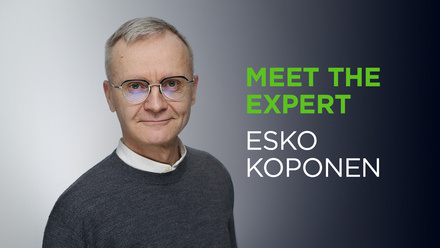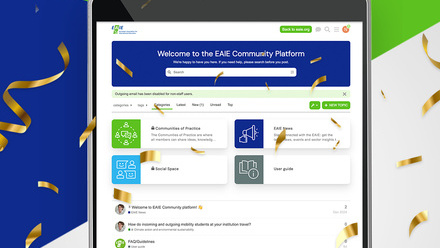2020: a story of adversity, agility and resilience

As we approach the end of 2020, a year like no other, it is a good time to reflect on how our lives have changed and to begin to imagine what lies ahead.
International education has unfolded in ways we could not have envisaged and the impact has presented many challenges for our sector. As we ready ourselves to face a new year, with a different set of challenges, there is no doubt in my mind that we can build on our experience of 2020.
What lies ahead?
Views on the recovery in terms of international student mobility range from a sharp decline to a positive bounce back. I am inclined more towards gradual recovery based on the need for confidence levels to return to normal, set against the background of economic and financial impacts at national and local levels.
It is reasonable to predict that the way students ‘consume’ international mobility may change
Given the accelerated Digitalisation in the days of COVID-19 , it is reasonable to predict that the way students ‘consume’ international mobility may change. This year we have been compelled to ‘pivot at pace’ but when we have time to draw breath and reflect it will be clear that students and staff will require new skills and competences to live, study and work in a digital world. We adapted overnight to a wide range of online information sources and tools, and in doing so have also adapted to new working cultures and practices in our sector. This opens up opportunities to imagine a new approach to internationalisation.
It has been clear for some time that Virtual exchange and Internationalisation at Home: the perfect pairing have the potential to re-shape international student mobility, but we will have to address issues of inclusion, access and student support. Online teaching has led to an increased awareness of the need for mentoring, guidance and support to alleviate problems in mental health and well-being. This pandemic has also exposed the reality of limited access to technology and the ways in which this has inhibited learning for some people from disadvantaged or rural communities.
New structures
If we assume students will continue to access different options with respect to online mobility – ranging Finding the digital balance for teachers and learners – and some periods of physical mobility will again become the norm, students will expect a joined up approach. For this to happen universities will have to respond to the challenges and complexities this will present.
Moving to more blended mobility will require organisational structures and processes to support this. Virtual mobility relies more on collaboration at the subject level and therefore tends to be in the domain of academic members of staff with less input required from the international office.
A ‘typical’ international office structure supports physical mobility and all that this entails (visas, travel, pre-departure briefings), but in the future we may see a strengthening of the connections between faculty and the international office, and this may lead to new organisational structures and processes designed specifically to embrace all forms of student mobility.
No one has a crystal ball, but some predictions for the future could include a Rats, creativity and societal needs: new partnerships for new challenges (partnerships, projects etc) and how we engage with partners. We can achieve a lot in the virtual world, but forging strong connections built on trust and mutual understanding is much more difficult to achieve at a distance.
A year of extremes
The EAIE has had to ‘pivot’ this year as well. Our approach to community engagement and knowledge sharing – in the form of EAIE Community Moments, the Community Summit, the Forging creative pathways and connections online and more – provided a greater appreciation of what we value. What has emerged is a stronger-than-ever commitment to advancing the vital work of international higher education in a complex and unpredictable world.
2020 ultimately reinforced our collective understanding that international education can and does make the world a better place
As we prepare to bid farewell to this year of extremes, we should be proud of our achievements and be confident that we have demonstrated our ability to emerge smarter, stronger and more committed to one another and to our vision of “an equitable world in which international education connects diverse perspectives and fosters greater understanding.”
Painful as it was in many respects, 2020 stands out as a remarkable period that tested us on a multitude of fronts, but ultimately reinforced our collective understanding that international education can and does make the world a better place. I know we are all looking forward to a new year and the past three months have offered reasons for optimism. Science has prevailed, some America on our minds have given us hope and at the EAIE we are looking forward to meeting you in person in Gothenburg in 2021.




